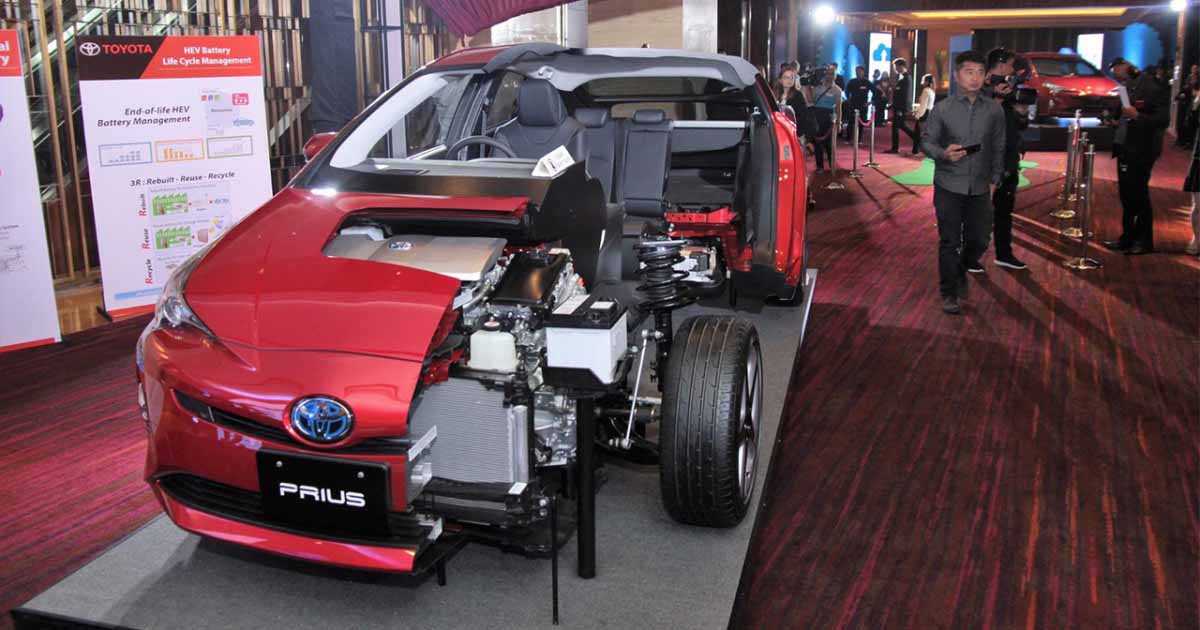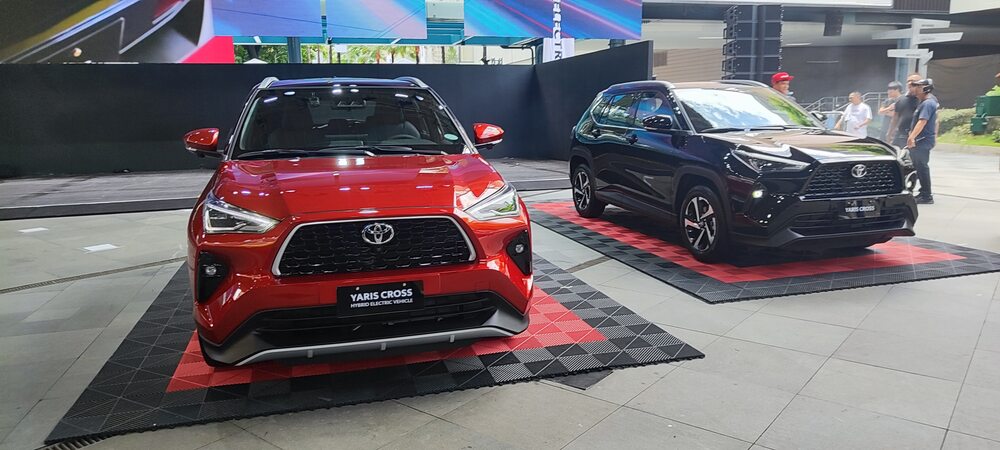CLIMATE change and the urgency to mitigate its effects has inspired unprecedented collaboration between industries, governments, and individuals. Even the United Nations, with its Sustainable Development Goals is pushing for electrification of vehicles.
Hybrid and electric vehicles are prime examples of technological solutions that harmonize with this collective mission. With each passing year, advancements in battery technology, charging infrastructure, and automotive design pave the way for a transportation landscape that aligns with the imperative of sustainability.
Pure EVs scare people because of one thing: range. This is why an expensive charging infrastructure must come before large scale adoption. Hybrids are the answer to the range anxiety. It is an acceptable balance of carbon reduction and vehicle electrification.
It has only been in the recent past that automotive industry pushed with hybrids and EVs on a large scale. Previous to Elon Musk and Tesla, automakers like Honda and Toyota were pursuing projects in hydrogen and fuel cell technology respectively and alternatively. Nissan on the other hand was already focusing on pure electric with the launch of its Hypermini platform at the 1995 Tokyo Motor Show.
To its credit Toyota released the first commercially viable hybrid in Japan and then globally–the Prius.
The Toyota Prius was first launched in Japan in October 1997 as the world’s first mass-produced hybrid passenger vehicle. It was subsequently introduced worldwide in 2000. I was lucky to be at the 1995 Tokyo Motor Show and saw the Prius launch. The first-generation Prius was a rather bland looking vehicle, it wasn’t based on any other Toyota vehicle but had the dimensions of a compact sedan and had a fuel efficiency rating of 28.0 km/L in using the standard Japanese 10-15 test cycle test. It was equipped with a hybrid drivetrain, which combined an internal combustion engine and an electric motor.
The second-generation Prius, which was completely redesigned for the first time in 2003, had a fuel efficiency rating of 35.5 km/L. The third-generation Prius, was slightly larger than previous models, achieved what was then the world’s leading 10-15 test cycle fuel efficiency rating of 38.0 km/L. Five years later the fourth-generation Prius, while inheriting the “triangle silhouette” design, now features a more aggressive appearance with a lower center of gravity. The new model combined an outstanding fuel efficiency rating of 40.8 km/L in Japanese JC08 test cycle with superb performance in a dynamic redesign.

As of September 2022, the Prius ranked as the world’s top-selling hybrid car with 5 million units sold.
Toyota has expanded the Prius family to include the Prius v, an MPV, and the Prius c, a subcompact hatchback. The production version of the Prius plug-in hybrid was released in 2012. The second generation of the plug-in variant, the Prius Prime, was released in the U.S. in November 2016. Global sales of the Prius c variant passed the one million mark during the first half of 2015.
Since 2014 however, the global pursuit has become relentless for hybrids and EVs–with China leading the pace. To reduce automakers’ environmental footprint and dependence on fossil fuels. In this pursuit, hybrid vehicles have emerged as a shining beacon of innovation and sustainability.
Combining the benefits of internal combustion engines (ICE) and electric motors, hybrid vehicles have transformed the way we view automobile propulsion. This article delves into the history, technological advancements, and exemplary models that have shaped the remarkable journey of hybrid vehicles.
The concept of hybrid vehicles dates back much further than one might think. In the late 19th century, inventors like Ferdinand Porsche were already exploring the integration of gasoline engines and electric motors. However, it wasn’t until the late 20th century that hybrids began to gain traction.
The 1990s marked a turning point with pioneers like Toyota and Honda introducing the Toyota Prius and Honda Insight, respectively. These early models laid the foundation for the hybrid revolution we witness today.
Honda’s hybrids
Honda also has a long history of developing hybrid cars, starting with the Insight in 1999, which was its first mass-produced hybrid car. It never reached the numbers of the Prius even in Japan.
The Civic was the second hybrid car from Honda, launched in 2001, followed by the Accord in 2004. In 2008, Honda launched the Clarity, a fuel cell car.
Honda’s hybrid cars have been praised for their efficiency and performance. The company has been using innovative engineering and emerging technology to create perfectly rounded sports cars. For example, the second-generation NSX, launched in 2016, was Honda’s first hybrid-powered sports car. It was developed using F1 know-how and applied it to a hybrid powertrain. The NSX is a super sports car that has made continual improvements over time.
Over time however, the Insight has gained some traction, at least in the US and Japan in terms of sales. However, Honda already announced it will end production of the Insight to focus on the popular nameplates like the Civic and Accord for hybrids and EVs.
Chinese brands are popularizing hybrids too

China has been focusing more on electric vehicles (EVs) in recent years. However, it has been making strides in the development of hybrid cars too for the same reason as Japanese automakers except Nissan are looking towards multiple powerplants.
According to a report by the MIT Energy Initiative, China aims to have 40 percent of all vehicles sold in the country be electric by 2030. The Chinese government has implemented policies to encourage the adoption of EVs, such as providing generous subsidies for EV purchases.
In addition, the government has imposed a mandate on car manufacturers that requires a certain percentage of all vehicles sold by a manufacturer each year to be battery-powered. This definition includes hybrids and mandate will have a significant impact on the worldwide manufacture of EVs and batteries, driving down their costs globally.
Combined, the Chinese brands are also the top exporter of hybrid electric vehicles from the region (excluding Japan).
Some notable Chinese hybrid cars. include the BYD Qin Pro which is a plug-in hybrid electric vehicle (PHEV) that can travel up to 43 miles (~70 kilometers)on electric power alone before switching to gasoline power. Another example is the Geely Tiggo 5 Hybrid, which is available in the Philippines can travel up to 37 miles (~60 kilometers) on electric power alone before switching to gasoline power.
Kinds of hybrids
- Parallel hybrids are the first-generation hybrids featured parallel power systems, where both the gasoline engine and electric motor could provide power to the wheels. The system switches between the two power sources based on driving conditions and energy demands. The Toyota Corolla Cross is an example, powered by a 1.8-liter gasoline engine and an electric motor that produces a combined output of 121 horsepower. It has a fuel efficiency rating of 23.3 km/L
- Series hybrids used a gasoline engine was used solely to generate electricity for the electric motor, which then propelled the vehicle. This setup eliminated the mechanical link between the engine and the wheels, offering greater flexibility in power distribution. Nissan’s Kicks is currently the most popular of this kind of vehicle.
- Plug-In hybrids (PHEVs) could be charged from external sources, allowing for longer all-electric driving ranges. This innovation provided users with the option to rely more on electricity and less on gasoline. The Mitsubishi Outlander PHEV is equipped with a 2.4-liter gasoline engine and two electric motors that produce a combined output of 221 horsepower. It has an all-electric range of up to 45 km.
- Running on electric power alone, gasoline power alone, or a combination of both, full hybrids is currently the most popular platform because of the ease of production and maintenance. Also known as Series-Parallel or Power Split hybrids, the electric motor can provide additional power to the gasoline engine when needed, such as during acceleration. When the car is stopped or traveling at low speeds, the gasoline engine can shut off completely, and the electric motor can take over to save fuel. The Lexus 330H is the most powerful of current hybrid vehicles and the Toyota Prius is included in this kind of hybrid.
- There is a fifth kind called the mild hybrid or battery-assisted hybrid vehicles, which uses an electric motor to assist the internal combustion engine (ICE). The electric motor is not powerful enough to propel the car by itself, but it can provide additional power to the ICE during acceleration and other driving conditions. Mild hybrids are also known as power-assist hybrids.
 The Suzuki Ertiga Hybrid is an example. It is equipped with the Smart Hybrid Vehicle by Suzuki (SHVS) system, which assists the engine using a light, compact integrated starter generator (ISG) and a high-efficiency lithium-ion battery with high charging and power supply performance. The SHVS system enhances energy efficiency and helps the Ertiga achieve better fuel economy.
The Suzuki Ertiga Hybrid is an example. It is equipped with the Smart Hybrid Vehicle by Suzuki (SHVS) system, which assists the engine using a light, compact integrated starter generator (ISG) and a high-efficiency lithium-ion battery with high charging and power supply performance. The SHVS system enhances energy efficiency and helps the Ertiga achieve better fuel economy.
Environmental impact and future prospects
Hybrid vehicles have made substantial contributions to reducing greenhouse gas emissions and fuel consumption. They have become a stepping stone toward a future dominated by fully electric vehicles. As battery technology continues to improve, hybrids will likely become even more efficient and affordable, allowing for wider adoption.
Hybrid vehicles have transcended from conceptual experiments to mainstream solutions that address the pressing concerns of climate change and fossil fuel depletion. The journey of hybrid vehicles is a testament to human ingenuity and determination to shape a sustainable future for the automotive industry and the planet at large. With each technological leap, hybrids bring us closer to a new era of transportation, one that is cleaner, greener, and more interconnected than ever before.–edited by Raymond B. Tribdino



 The Suzuki Ertiga Hybrid is an example. It is equipped with the Smart Hybrid Vehicle by Suzuki (SHVS) system, which assists the engine using a light, compact integrated starter generator (ISG) and a high-efficiency lithium-ion battery with high charging and power supply performance. The SHVS system enhances energy efficiency and helps the Ertiga achieve better fuel economy.
The Suzuki Ertiga Hybrid is an example. It is equipped with the Smart Hybrid Vehicle by Suzuki (SHVS) system, which assists the engine using a light, compact integrated starter generator (ISG) and a high-efficiency lithium-ion battery with high charging and power supply performance. The SHVS system enhances energy efficiency and helps the Ertiga achieve better fuel economy.

